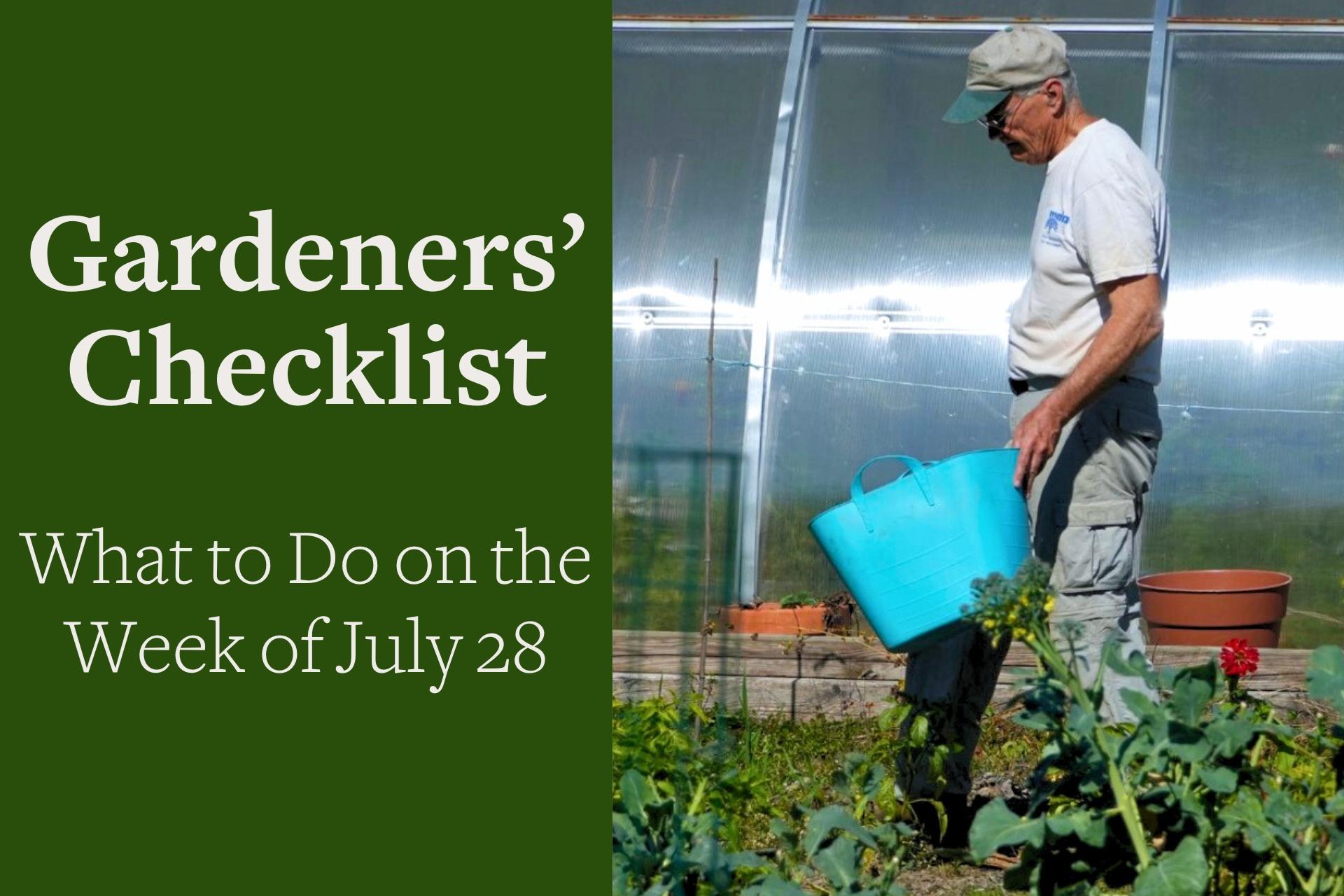You are here
Gardeners Checklist: Here Is What to Do the Week of July 28
Gardeners Checklist: Here Is What to Do the Week of July 28
By Ron Kujawski
* Sow seeds of leafy greens including Asian greens, Chinese cabbage, endive, kale, leaf lettuce, mustard greens, spinach, and Swiss chard. Also, sow seeds of beets, carrots, kohlrabi, radish, and turnip. I’m taking a chance on sowing another crop of bush beans since many varieties of bush beans mature in 50 to 60 days. Given that the only thing I’ve won in the past 40 years of gambling is a bushel basket of butternut squash, this may be a big risk, but I’m due.
* Protect cucumbers, melons, pumpkins, and squash from powdery mildew by spraying the plants with neem oil, jojoba oil, horticultural oil, or with the biological fungicide Serenade, which contains the bacterium Bacillus subtilis. Where powdery mildew has already developed, apply one of the oils since they have some ability to eradicate the fungus. Regardless of the product used, read and follow the label directions.
* Root cuttings from begonias (wax and rex types), coleus, geraniums, and impatiens (including New Guinea impatiens), and grow these on as houseplants this winter. Keep in mind that these plants need bright light for best growth indoors. Experiment with cuttings of other soft stemmed annuals in your garden. Not only will these annuals provide color indoors in winter but the plants can serve as stock plants from which to take cuttings for outdoor plantings next spring.
* Apply an organic liquid fertilizer, such as fish emulsion, to roses. This should be the last fertilizer application for this growing season.
* Don’t panic yet if the brown dormant grass in your lawn hasn’t responded to recent showers by greening up and renewing growth. Showers have been spotty with some areas receiving more rain than others. If your lawn hasn’t started greening up, give it a few more weeks, and then panic if it’s still brown. At that point, I’ll give you some advice on panic control.
*
Speaking of panic, I recently ran into (figuratively, not literally) a friend who was ranting about giant “bees” digging holes in his lawn. “The biggest bees I’ve ever seen” he said. With those two clues — giant “bee" and digging holes — I knew that he was referring to cicada killers. Now that’s an ominous name for an insect that actually is very non-threatening, except to cicadas. Cicada killers are not bees but solitary wasps, meaning that these wasps do not live in colonies as do other wasps. They derive their common name from the fact that the female of the species captures cicadas, which she hauls back to the burrow she previously dug. The cicada will serve as food for the wasp’s larvae. Male cicada killers do not sting and the females will only do so if handled roughly. So, be kind to your cicada killers, and do not panic.
Ron Kujawski began gardening at an early age on his family's onion farm in upstate New York. Although now retired, he spent most of his career teaching at the UMass Extension Service. He serves on Berkshire Botanical Garden’s Horticulture Advisory Committee. His book, Week-by-Week Vegetable Gardener’s Handbook, is available here.
Help Our Garden Grow!
Your donation helps us to educate and inspire visitors of all ages on the art and science of gardening and the preservation of our environment.
All donations are 100 percent tax deductible.


